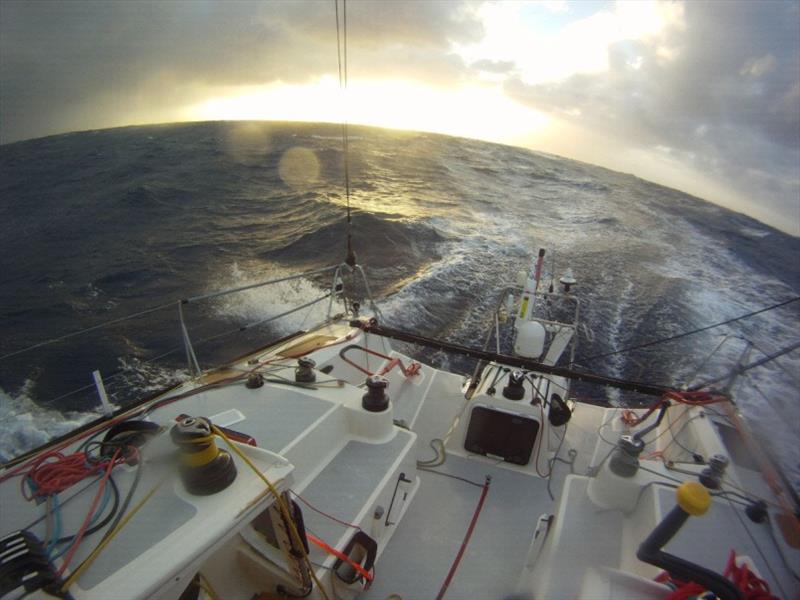
Global Solo Challenge - How would you prepare for a single-handed circumnavigation?
by Global Solo Challenge 17 Dec 2021 02:35 PST

Surfing in the Southern Pacific Roaring Forties © Global Solo Challenge
Preparing for a solo circumnavigation by the three great capes is an enormous challenge. So much so that getting to the start line is often just as hard as the navigation that will follow.
Preparation is key to success, the areas to cover are so many and so wide ranging that it can feel overwhelming. Not only skippers have to learn about solo sailing, sail changes, manoeuvres, but have to become experts of many aspects of their boats which they have to care for and keep in working order. This ranges from electronics and electricity management and generation, autopilot settings and repairs, weather routing, satellite communication and data download, general maintenance, small or large repairs, food, sleep, and a lot else. The list seems never ending and some skippers will face a learning curve steeper than those who have already done more mileage.
The event requires a minimum 2000 miles passage on the boat entered in the event to be allowed to start, but we make it clear that this is almost to be considered a shakedown test of the boat and that nothing can substitute many more miles of navigation in different conditions to be ready for what will come ahead. We also encourage those miles to be sailed in tough and cold waters, to get a taste of southern ocean conditions.
Many skippers will start from A Coruña and head south, through pushed by the trades and through the Doldrums, then will press on through the South East trade winds and will reach somewhere near Fernando da Noronha. From there they will have to pass through a transition zone and press on further South. They can't quite yet turn left as the sticky trap of the St. Helena High can be a costly mistake if sailed into. Instead the fleet will have to carry on on a southerly route and traditionally reach somewhere around Tristan da Cunha before effectively "turning left".
In practice, they will have to sail South until they find the first favourable echo of the winds of a roaring forties depression. For those new to the game it will be quite a shock to see the change from the trades winds and the St. Helena high pressure out into the first glimpse of the southern seas. Conditions change dramatically in the space of a few days and there will be only the occasional respite until turning the corner at Cape Horn.
The route to Tristan da Cunha is relatively easy and is rarely a real test of skipper or boat and can be very misleading giving a false sense of security to a skipper. For this reason preparation and putting the boat under some serious stress before departure is key, it would be a very costly mistake to be lulled by trade and light winds all the way to Tristan da Cunha just to find out how incredibly different conditions will be later on.
Preparing mentally for all of this is something that we can hardly do ashore, and hence previous solo mileage is crucial, the more the better. For some sailing in the great south will be exhilarating for some it will be one tiring grim experience. Wet, cold, damp, sailing from storm to storm. For all, it will be something they'll never forget.
We asked a few of the 38 entries to date what are their plans to prepare for the event - find out what they said.